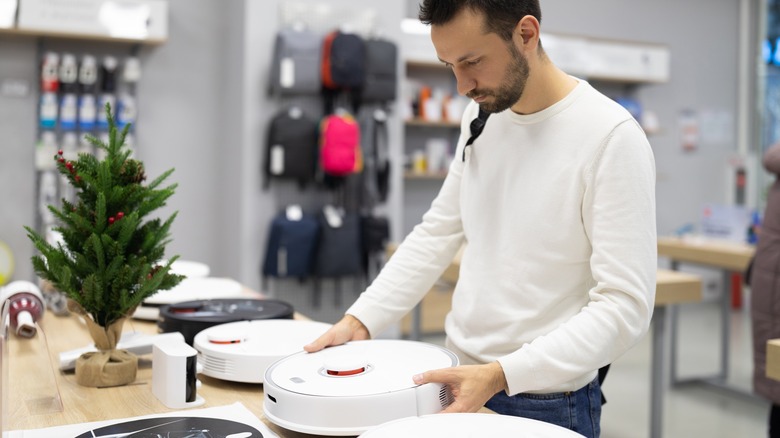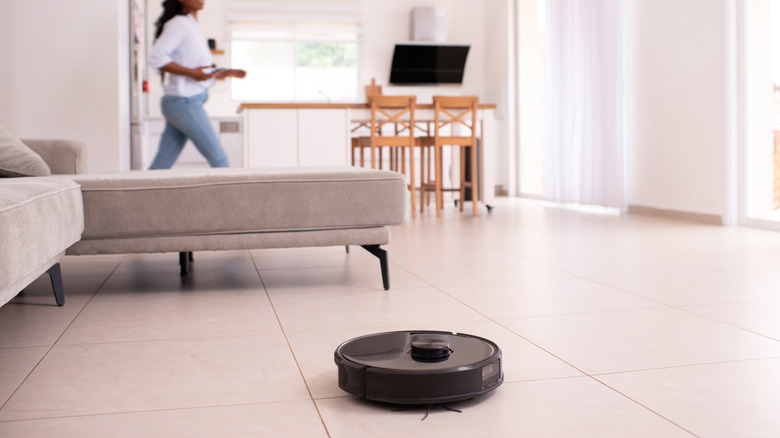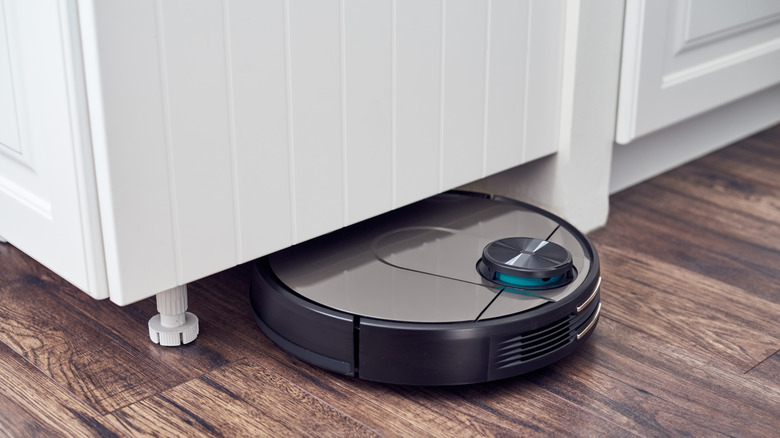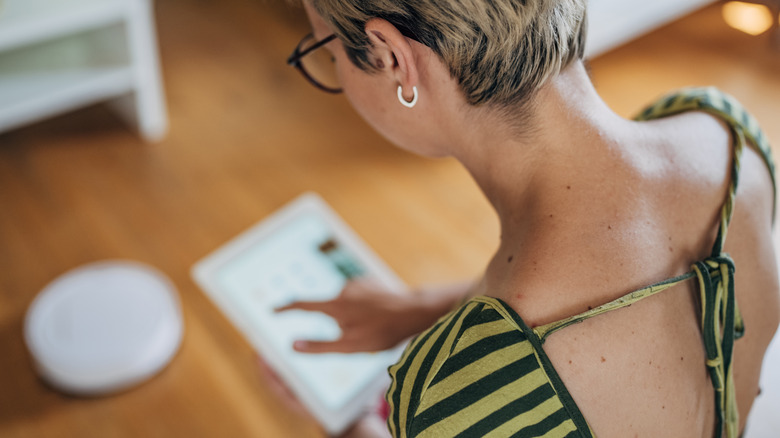Our Expert Recommends The Best Robot Vacuum For Your Floor Type
Your home's floors are unique and special, so one robot vacuum doesn't fit all despite what the advertisements for each brand tout. Many vacuum options can accommodate a variety of floor types and cleaning needs, but sometimes an appliance can only offer so many functions and still misses one or two. Suppose your home features more than one type of flooring. In that case, it can be tricky to accommodate all your needs into one machine, which is why House Digest connected with Steve Dodge, owner of SoCalRobotRepair, to exclusively discuss the best options for readers who want to find a vacuum that suits (almost) all of their requirements. According to Dodge, the type of vacuum you need depends on your flooring. "To work effectively on multiple types of floors, a robot must detect different surfaces."
He goes on to urge buyers to consider what they want out of their robot. Dodge explained that "Various manufacturers are adding the ability to program robots in their applications so that they know where a particular type of surface is in the house." Brands like Eufy are great for excessive dust, while many other robot vacuums are able to switch modes as they traverse your home, adjusting to the floor type and applying the correct settings. Dodge added, "All major companies offer this feature, such as iRobot (Roomba), Ecovacs Deebot, Xiaomi (Roborock), Shark Robotics, and many others that are not so well-known."
Keep your floor type in mind when picking a robot vacuum
Knowing the brush type that your vacuum uses actually plays a huge role in choosing the best robot for your flooring. "... Each type of surface requires a special brush. Carpet requires beaters (usually completely hard rubber rollers that knock the dust out of the carpet during vacuuming)," Steve Dodge said in his exclusive interview with House Digest. "Tile, wood, and vinyl require brush rolls to sweep away dust and debris from smooth surfaces." With this in mind, you can shop for a robot vacuum with the brush type suited for your flooring. Being realistic about its cleaning capabilities is important when shopping for a robot vacuum since Dodge noted that there are no current appliances on the market that can interchange the brushes for varied flooring within the home.
If your house features carpet and vinyl, wood, or tile, you might need to invest in multiple appliances or choose one that will cover more square footage of flooring and spot-clean other areas. For hard floors, Dodge also noted, "No robot other than washing robots will also be able to remove sticky dust and other substances from any surface." The iRobot's Scooba washing robot was discontinued, and using a regular vacuum to clean up spills could break the internal parts. For the moment, it seems vacuums that can also wash your floors aren't an option, and robots that mop usually just move dirt and stuck-on mess around rather than mopping them up.
Consider size and needs
Once your expectations have been set depending on your flooring, Steve Dodge explained that vacuum robots can be helpful in everyday scenarios. "Overall, vacuum robots are very useful devices. They help us a lot in our day-by-day fight against dust, which always penetrates our homes in different ways," he said when speaking exclusively to House Digest. "To choose the right robot, a customer must evaluate the features of his home: what floor surface predominates, how many corners there are, whether they have a pet, what kind of animal (long-haired or short-haired), etc."
Dodge recommended Eufy robots for homes with a lot of areas that collect dust. Affordable and low-profile, he said this vacuum can help maintain your home despite an obstacle course of furniture. For carpeted homes, Dodge suggested checking out the most recent iRobot Roomba or the Roborocks, both of which have beaters for their predominant brush option, which helps pull dust, grime, and particles out of the fibers. "If you have a lot of corners in your home, it's better to choose D-shaped robots like the Roomba S9," Dodge mentioned. "If you want to prevent someone else from observing the interior of your home ... it is better to avoid robots with cameras and use LIDAR navigated robots such as the Ecovacs, Roborocks, and Shark AI models." Additionally, robots with LIDAR navigation can't reach under furniture or cabinets as well because of their height. They also feature parts that rotate, which makes them more prone to malfunction as dust particles collect inside.
The golden rule: Take care of your robot vacuum
If you've been trying to decide between the Roomba and the Shark, for example, take Steve Dodge's tips on considering your flooring. He also noted, "Big robots usually have more powerful suction but are larger in size. Small, low profile robots are more compact, but have lower suction and narrower surface area they vacuum in one pass." Regardless of what brand and style you choose, he reminded buyers to take robot maintenance very seriously if they want a clean home and, more importantly, a functional machine. "Don't forget that robots are very sophisticated devices. While they care for you, they also need some care from you. Don't skip periodic robot maintenance from specialists."
Check your machines regularly since they are constantly vacuuming up dust, hair, particles, and other detritus. During his exclusive session with House Digest, Dodge wanted to ensure readers lean on specialists to help with breakdowns and malfunctions. "Even if a robot looks good on the outside, it's very possible that the inside is full of dust and hair," he said. "Usually, disassembling a robot is not difficult; it is much more difficult to put it back together without experience." He added that replacing filters and brushes in a timely manner is imperative to preventing issues. Avoid common mistakes with your vacuum cleaner like vacuuming hard or sharp objects, which could slowly harm your appliance. A little love toward your vacuum will go a long way and keep your floors spotless.



